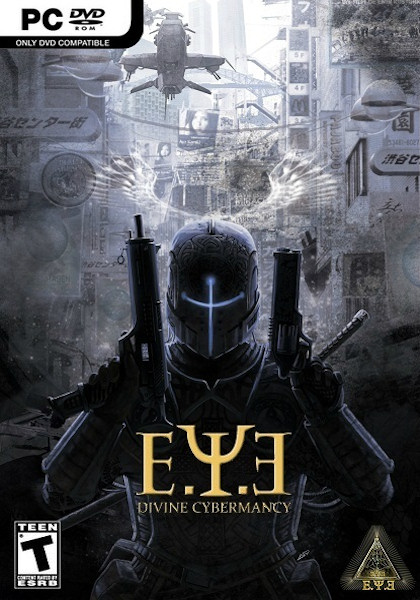E.Y.E: Divine Cybermancy Review
-
Category: ReviewsHits: 18700

Article Index
Unfortunately, that never really happens for E.Y.E: Divine Cybermancy, a game which is as much defined by its bizarre quirks and ambition as it is by its numerous failings. Set in a futuristic 24th-century world with lore so thick it'd take a katana to slice through, the plot revolves around a group known as the Secreta Secretorum, an ancient secret society, who are waging war against the Federation, a massive Earth-born coalition of planets ruled as much by the oppressive regime as by corporate power. Within the Secretorum are two rival cults, the Culters and Jians, who are at much at war with each other as the Federation. Compounding all this is the meta-streumonic force, a mysterious alien race which is able to manifest the emotions and thoughts of humans into vicious monsters, which themselves devastate many planets. Suffice is to say, it's fairly complicated, but it's also refreshing that the game makes no apology for those complexities. Unfortunately, E.Y.E doesn't do a great job of teaching you exactly who all these factions are, why they're allies or enemies, or why you should care about any of them... lengthy historical texts help set things up a bit better, but even then it's hard to shake the feeling you're constantly flying half-blind.
Beyond the poor storytelling, though, the game initially makes a strong impression. Combining moody noir cyberpunk with Japanese art influences and character designs, it's got a definite sense of style that goes beyond its humble indie studio origins, with some occasionally excellent artistry to back up the same version of Source that powered Portal 2 from a few months ago. This positive impression continues upon character creation, when you're presented with a long character sheet containing a large array of different statistics, determined in part by random die rolls and a selection of genes that make up your avatar. There are more stats, skills, and abilities available than most other shooter-RPGs, and even some full-fledged traditional RPGs, and the potential this provides for diverse gameplay is something that the game constantly tempts and teases at.
Gameplay takes on a typical mission-based structure, broken up by time spent in the Temple HQ, which serves as a hub where side-missions, stores and upgrades can all be accessed. When it comes time to get into the game, you'll find your avatar deposited at a drop zone somewhere in a level, provided some orders, and then thrown in blind to accomplish them. Levels are typically extremely large, featuring non-linear pathways, extensive sewer and tunnel systems underneath, vents to sneak through, multiple floors in various buildings, roofs to jump atop, etc. In some senses it feels like a less-structured, more open version of what Deus Ex offered a decade ago, and while it could do a better job of highlighting certain routes (there's no map to speak of, and sometimes layouts get extremely confusing), the lack of hand-holding is, once again, refreshing.
In another nod to Deus Ex, at several points throughout the story missions, you'll be called upon to choose your own objectives, in order to play to your character's strengths. If you've specialised in hacking, then you may well be able to use that ability to accomplish a mission accordingly. If you want to go for a frontal assault, you can simply kick down the doors and blow the head off of a bandit leader, while if you're the type to specialise in subterfuge, you can infiltrate them and run errands in order to gain access with the commander. These decisions are much appreciated, and add a degree of replayability, as well as chaos when you inevitably screw something up. Not all paths are created equally, either, so this game of Russian Roulette works both ways. The only real unfortunate thing here is that there simply isn't enough of it.
Despite the heavy RPG focus of the design, much of the game is spent in combat, whether that's dropping foes with assault rifles, sniping from a distance, cutting them up with swords, popping headshots with pistols, or mowing them down with miniguns. The selection of weapons is wide, and they're all varied well in terms of feel and effectiveness. Equipment is balanced by weight, with a grid-based inventory ensuring that you can only take as much as you can hold on you, and traveling light will carry the benefit of increased movement speed, something that shouldn't be taken for granted in chaotic firefights or while running from hordes of enemies. The equipment system is one major strength of the game, and it goes a long way to making different play-styles feel unique. The uniqueness of one's play-style is reinforced by stats, which factor into combat. Accuracy determines ranged damage bonuses and armour penetration, for instance, while Strength and Agility affect melee damage and attack speed. While more stats geared directly towards combat or certain types of weapons would have been nice, what's here is functional, and balanced by a wider selection of mobility and non-combat skills.
Related Games:
E.Y.E: Divine Cybermancy


